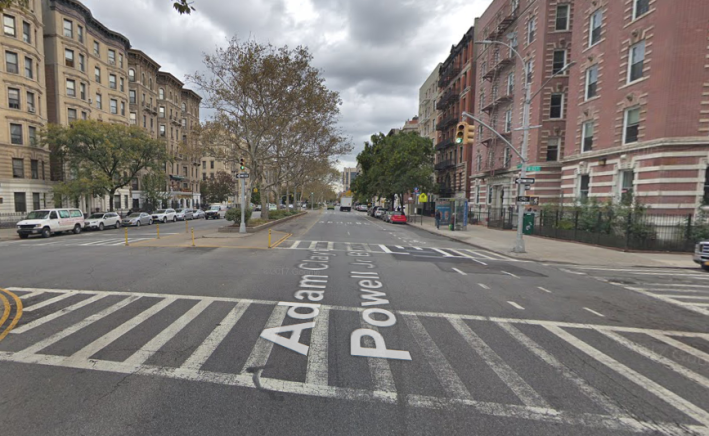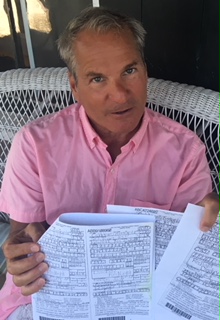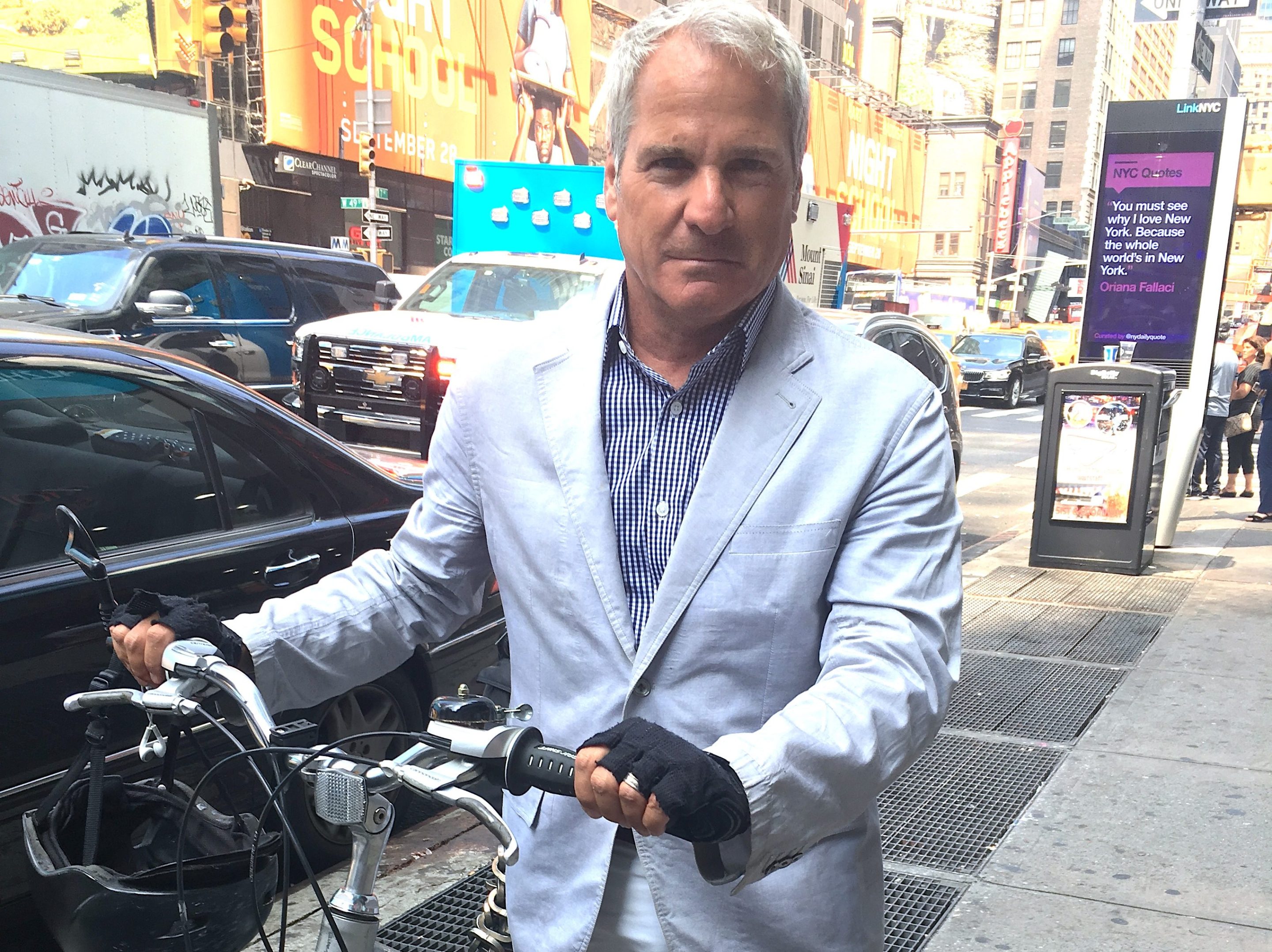Cyclists who run red lights at high speeds and endanger pedestrians should be ticketed by the NYPD.
There, I said it.
Now, can we talk about the real world instead of a Steve Cuozzo fantasyland for a second? The NYPD needs to stop ticketing cyclists like they are cars. And the state Department of Motor Vehicles needs to stop charging drivers and cyclists the same fee — $190 for first offense, $375 for second, etc. — for moving through a red light. The fact that car drivers and cyclists are fined the same amount for a dramatically different level of danger, is simply unjust.
Since 2011, drivers have killed 969 pedestrians and cyclists in New York City. Over the same period, cyclists have killed five pedestrians. So break that down: 99.5 percent of victims were killed by car drivers and .5 percent of victims were killed by bicyclists.
The dangers presented by these vehicle operators is different by nearly a factor of a hundred. So it is absurd to treat the danger on the road equally in the summons book.
Speaking of the absurd situation, meet George Calderaro, a community relations director at Columbia University. He's one of the safest cyclists you'll ever meet — yet he's currently on the hook for more than $2,000 in tickets for passing through red lights near his office.
And here's a nifty twist: all four tickets were written by the same NYPD officer, a guy named Jaeger.
The details are both familiar and infuriating to cyclists.

Calderaro got tickets 1 ($190) and 2 ($375) on Seventh Avenue and 113th and 114th streets in Harlem's 28th Precinct on Oct. 6, 2016. Here's how he described them in court testimony:
I am and have been a safe, exemplary daily New York City bike rider for 30 years; I wouldn’t be alive if not. On a weekday morning at 8:30, I was on my way to give a free community presentation for small business owners in Harlem on a relatively deserted street. I paused at a red light and, seeing no cars or pedestrians, proceeded through the red light and the following one, again after pausing to make sure no cars or pedestrians were in the intersection. An unmarked car pulled me over. ... I was fined and paid $545 for pausing at two lights on a bike. For context about the inappropriateness of this penalty, a car ticketed for speeding in a school zone is fined $50. To illustrate the lopsidedness of these fines, State Senator Martin Golden has accrued 10 tickets for speeding in school zones for a total of $500, still less than the fine I paid for pausing at an empty intersection. On a bicycle.
Calderaro got tickets 3 ($940) and 4 ($940) in almost the same location — on Seventh Avenue and 114th and 115th streets in Harlem's 28th Precinct — on March 8, 2017. Here's how he described them in court testimony:
I was on the same street on my way to a community meeting and, after my previous experience, rather than pausing, came to a complete stop before proceeding through the empty intersection. The same thing happened: two tickets from the same officer. ... I feel that this summons serves no public good but was issued to help officer Jaeger meet some quota or act out some anti-bicyclist bias.
And this is the part that informs the title of this column. Jaeger is obviously under some pressure — whether self-imposed or imposed by his commanding officer — to crack down on cyclists. The fact is, his ultimate boss, Mayor de Blasio, says he need not feel such a pressure.
Back on Aug. 24, during his regular appearance on the Brian Lehrer show, de Blasio was questioned by a woman who claimed she received a ticket for biking on the sidewalk at 6:38 in the morning — a crime she committed because the roadway was too narrow for her to pass safely. The mayor's answer should be sent to Office Jaeger immediately:
At 6:38 in the morning, I’m a little surprised that the officers did that and they obviously have discretion in these situations. One of the things we’ve emphasized really across all enforcement by NYPD [is] training officers to exercise discretion and look at each individual situation. So I think in a lot of cases officers might say, "Okay this is one where, we’re not going to – we’re not going to sweat it but we do want to remind you don’t do this regularly."
To Calderaro, this is just the city talking out of both sides of its summons book: The mayor says officers should use their heads but the officer, at least in Calderaro's case, doesn't appear to have one.
"Some modicum of reasonable judgment [by the NYPD] should be expected," he said. "Sitting at an intersection waiting for people who stop at lights then proceed after seeing no traffic seems like entrapment. We have all seen and been annoyed or terrified by dangerous bicyclist going the wrong way on a one-way street or riding on the sidewalk, but this is not a case of reckless endangerment despite the egregious penalty."

On the subject of recklessness, the gap between cars and bicycles is also wide. Drivers frequently exceed the speed limit — remember speed cameras? They issued more than 4.5 million tickets in just four years (and those were only around 140 schools and only during school hours and only people who went more than 10 miles per hour over the 25 mph limit!). Only cyclists competing in the Tour de France can get up to such speeds.
And many thousands of pounds more Newtons of force are created when a 3,200-pound car slams into a pedestrian versus a 30-pound bicycle. That's just physics.
And it's also politics.
In 2015, Council Member Antonio Reynoso introduced a resolution calling upon the state legislature to make it legal for cyclists to pass through a red light after stopping — something that has been called "the Idaho stop" because it's been legal in the Gem State since 1982. Over the years, nine other states and many counties have legalized versions of the Idaho stop, but the very idea is dead in Albany.
Reynoso's resolution cites basic common sense as its motivation: "Individuals who ride bicycles do not pose the same safety hazards to pedestrians because bicycles generally travel at a slower speed and bicyclists have the ability to more quickly see and respond to surrounding traffic,"
Calderaro certainly agrees, saying that the state's failure to even take up the Reynoso motion is evidence that government "is less concerned about safety than its retrograde bias against bicycles."
It also, he added, illustrates "a lack of awareness of urban transportation alternatives."
For now, it also indicates a lack of money in Calderaro's pocket. He appealed the two most-recent tickets, but was thrown out of court on Aug. 6. He has paid the full $2,425.






